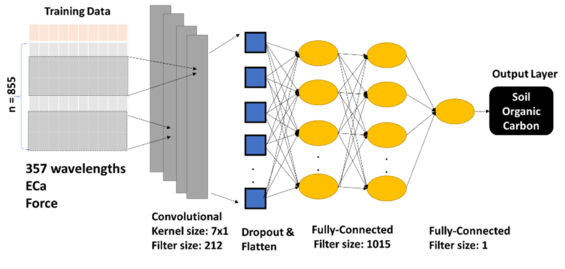By: Curtis Ransom | 08/20/2022 USDA-ARS Research Soil Scientist
Scientists at the Cropping Systems and Water Quality Research Unit in Columbia, Missouri have extensive experience estimating soil biological, physical, and chemical properties using proximal soil sensors. With support from the AI Innovation Fund, ARS Research Associate Dr. Curtis Ransom and recent University of Missouri graduate Dr. Chin Nee Vong, are utilizing the Ceres HPC cluster to explore methods for developing 3D maps of soil organic carbon using diffuse reflectance spectroscopy, bulk soil electrical conductivity, and soil penetration resistance measurements down to a depth of 0.90 m. To date, thousands of soil samples with corresponding sensor information have been collected across a range of soils in and around Missouri. Cleaning the data is time-intensive and has a degree of subjectivity, but these limitations have been minimized by using an interactive R shiny application on Ceres. Additionally, Ceres has been used to run Python scripts to model soil organic carbon with neural networks (Figure 1).
The initial modeling efforts have shown promising results, and the team is currently analyzing more samples to expand the dataset. Following completion of the lab work, this team will develop a framework for using the sensor data to predict soil organic carbon in three dimensions. This framework will be used to estimate rates of carbon sequestration or carbon loss under various management practices. Key findings will answer practical questions such as how many samples are needed to accurately capture the spatial variability of organic carbon within a field and how to optimize sampling protocols for different farmer management practices. This cost-effective, sensorbased method and modeling framework will improve our understanding of how agricultural lands can sequester carbon and help the United States work towards the goal of becoming carbon neutral.

Figure 1. Diagram of the 1D-CNN model framework used to predict soil organic carbon.

